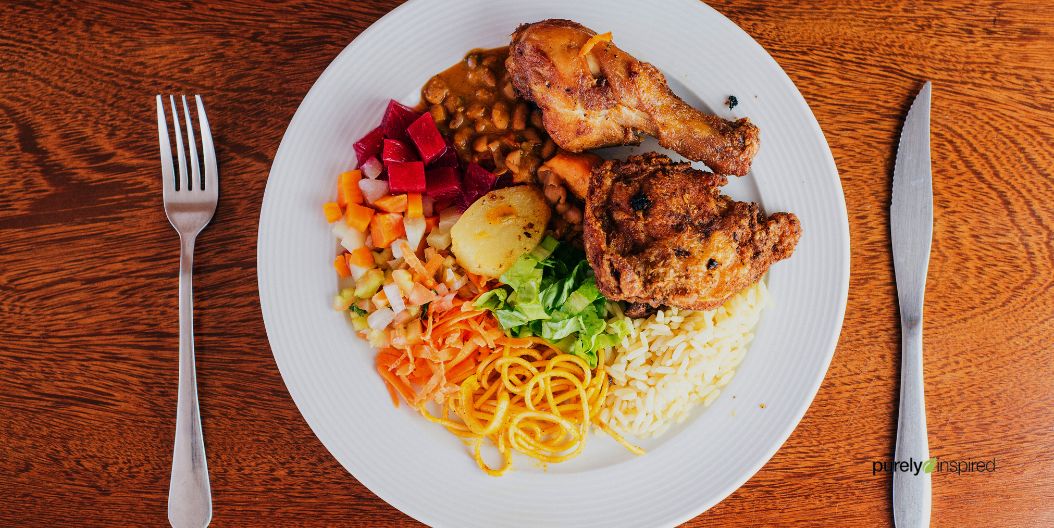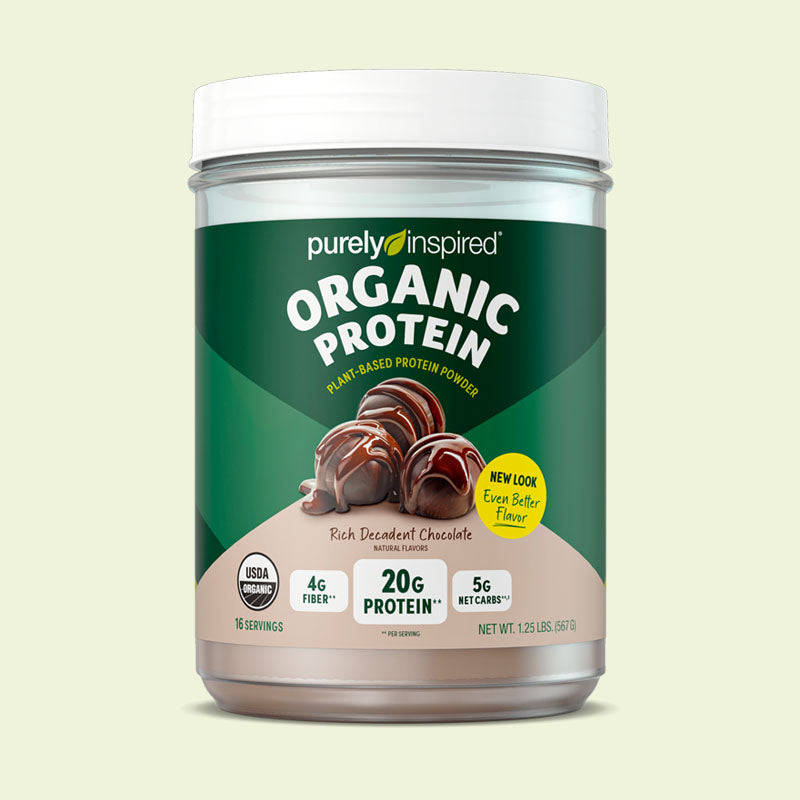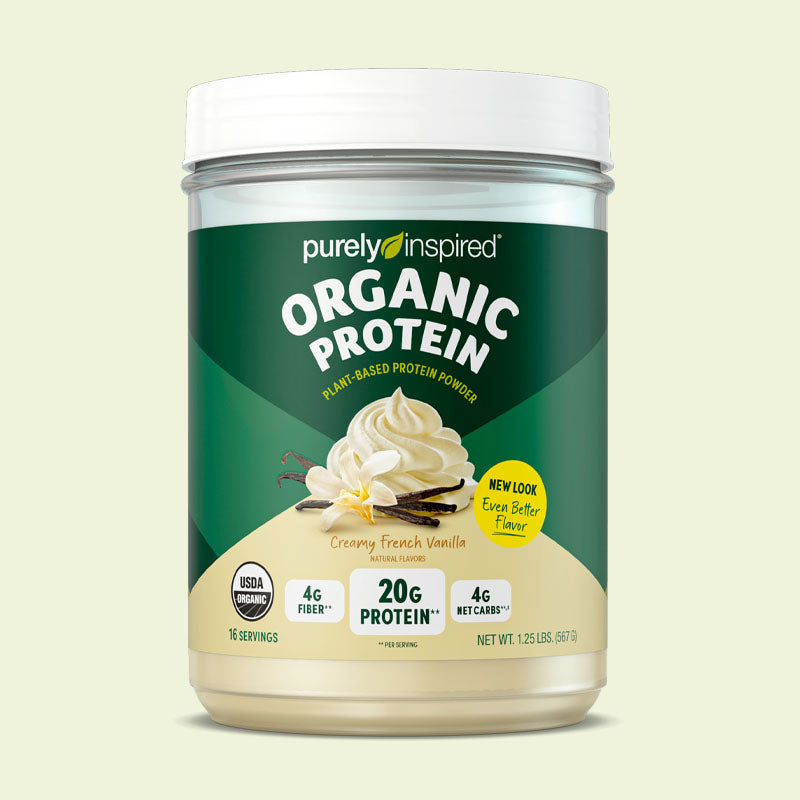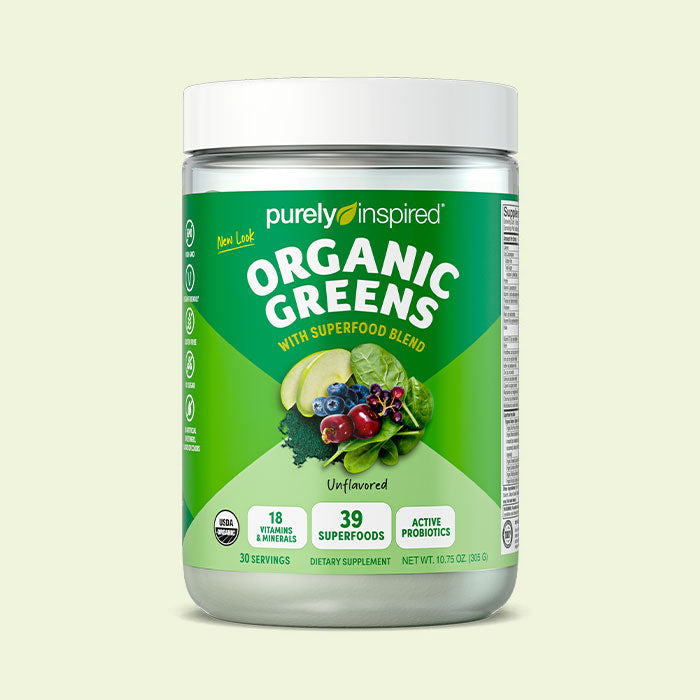You’ve probably tried cutting calories, skipping dessert, or even switching to “diet” foods yet you’re left wondering if there’s more to weight loss than just calories, and do macros matter for weight loss?
Take this scenario as an example: let’s say there are two women who both eat the same 1,800 calories a day. One fills her plate with fast food and sugary snacks. The other balances her meals with lean protein, vegetables, whole grains, and healthy fats. Both are eating the same calories, but their results look completely different. Why? Because the breakdown of those calories, i.e, the protein, carbs, and fats, also known as “macros,” shapes how your body responds. Ignore macros, and you may feel hungry, lose muscle instead of fat, or struggle with energy. Pay attention to them, and you’ll have a much smoother, more sustainable weight-loss journey.
This blog will help you understand what macros really are, how they affect weight loss, and how you can balance them without stressing over numbers or complicated tracking apps. By the end, you’ll see that weight loss doesn’t happen just by eating less but by eating smarter. And when you understand how macros help in this goal, the path to lasting results suddenly feels much clearer.
Table of contents
What You Need to Know About Macros?
When people talk about “macros,” they’re simply referring to the three main nutrients that make up the calories in your food, which are protein, carbohydrates, and fats. These aren’t complicated diet terms; they’re the building blocks of every meal you eat.
Protein is For Muscle Building and Repair: It is like your body’s repair system. It helps rebuild muscle after workouts, keeps you full longer, and plays a big role in maintaining a healthy metabolism. Common sources include chicken, fish, eggs, beans, tofu, and Greek yogurt.
Carbohydrates are the Energy Source: Carbs often get a bad reputation, but they’re your body’s preferred source of fuel. They power your workouts, your daily tasks, and even your brain. Whole grains, fruits, vegetables, and legumes are examples of carbs that provide steady energy without the crashes.
Fats are the Support System: Healthy fats support hormone balance, brain health, and long-lasting energy. They also make meals more satisfying. Foods like avocados, nuts, olive oil, and salmon provide the fats your body needs in moderation.
Each macro has its role, and when you balance them, your body works at its best. Too little protein can mean losing muscle. Too few carbs can deplete your energy. Too little fat can leave you unsatisfied. So, getting the right amount of each according to your body’s requirement becomes very important because your body needs the energy and help to function well while you work toward weight loss.
Calories vs. Macros: What’s the Difference?
It’s easy to get confused with questions like, if weight loss is “all about calories,” then why do macros matter? The key is understanding the relationship between the two.
Calories: The Energy Count
Calories are simply a measure of energy. Every bite of food you eat gives your body fuel, be it from a slice of cake or a piece of grilled chicken. Eat fewer calories than your body burns, and you’ll lose weight. Eat more, and you’ll gain. It’s that straightforward, but unfortunately, it’s not the whole picture.
Macros: The Source of Those Calories
The calories in your diet come from macros, mainly protein, carbs, and fats. Each one provides a different amount of energy:
Protein: 4 calories per gram
Carbs: 4 calories per gram
Fats: 9 calories per gram
This means 500 calories of donuts and 500 calories of chicken and vegetables are equal in number but completely different in how they affect your body. One spikes blood sugar and leaves you hungry again soon, while the other keeps you full and supports muscle growth.
The Relationship Between Calories & Macros
You should see calories as your budget, and macros are how you choose to spend that budget. You can hit your calorie target but spend it poorly, leading to hunger, low energy, and muscle loss. Or you can spend it wisely, balancing macros so that your body loses weight, feels stronger, and is more energized along the way.
Do Macros Matter for Weight Loss?
The short answer to this is yes. Calories decide if your weight changes, but macros decide how it changes. Get the balance right and you lose more fat, keep more muscle, feel fuller, and have steadier energy. Get it wrong and you’ll fight cravings, feel tired, and risk losing muscle along with the weight.
What Happens When Macros Are Off?
Cutting calories without thinking about protein, carbs, and fats often leads to:
Constant hunger that makes “staying on track” exhausting.
Low energy, so workouts feel harder and you move less all day.
Rapid Muscle loss that can slow your metabolism and make the scale stall.
Mood swings and cravings, especially when carbs or fats are slashed too hard.
What Happens When Macros Are Balanced?
More fullness: Enough protein calms hunger and keeps snacks from spiraling.
Better workouts: Smart carbs give you the push to lift and walk more.
A firmer look: Keeping muscle while you lose fat changes how your body looks and feels.
Consistency: Meals feel satisfying, so you can repeat the plan for weeks, not days.
An Easy Example For You
Two people go for the same daily calories.
Person A eats a muffin for breakfast, a salad with little protein at lunch, a big bowl of pasta for dinner, and a few “healthy” nuts for snacking in between. By evening, they’re hungry again and skip the workout.
Person B has eggs or Greek yogurt at breakfast, a turkey or bean bowl with veggies and rice at lunch, salmon or tofu with potatoes and a salad at dinner, plus fruit and a small trail-mix snack. They feel steady, train well, and sleep better.
Same calories. Different macros. Very different results.
Who Benefits Most from Watching Macros?
Women who want to shed kilos and look toned without feeling drained.
Anyone lifting weights who wants to keep or build muscle.
Busy people who need meals that hold them over for hours.
How Much Attention Is Enough?
You don’t need an app to get started. Try these simple rules:
Put protein in every meal (eggs, yogurt, chicken, fish, tofu, beans).
Include smart carbs (fruit, veggies, whole grains), more on active days, a bit less on rest days.
Include healthy fats like olive oil, nuts, and avocado to feel satisfied, not stuffed.
Use the plate guide: ½ veggies + carbs, ¼ protein, ¼ fats.
If progress stalls, track for one week to spot gaps like not enough protein, carbs only at night, or fats piling up through snacks. Adjust, then go back to simple habits.
Understanding The Macros To Lose Weight
1. Protein
When people ask, Do macros matter for weight loss? Protein is usually the biggest element of your diet that can change the results for you. It’s not just another nutrient on your plate, but the one that makes the whole process of losing weight feel more doable and sustainable.
Keeps You Full, Longer: One of the hardest parts of weight loss is battling hunger. Protein helps solve that problem. Unlike carbs or fats, protein takes longer to digest, which means it keeps you fuller between meals. A protein-rich breakfast like eggs, Greek yogurt, or a protein smoothie can make the difference between steady energy and mid-morning cravings.
Protects Your Muscles: When you’re in a calorie deficit, your body can lose muscle along with fat. That’s the last thing you want, because muscle is what keeps your metabolism active. Enough protein will help you keep the muscle, so the number on the scale reflects real progress.
Supports Lean Muscle: Muscle burns more calories than fat, even at rest. When you prioritize protein, it prioritizes you back by protecting and supporting lean muscle. On top of that, protein requires more energy to digest than carbs or fats, which means your body burns a little more energy by digesting it.
Where to Get It: You don’t need to overthink it. There are plenty of protein sources that you can add to every meal, like,
Eggs or Greek yogurt at breakfast.
Chicken, turkey, or beans at lunch.
Fish, tofu, or lentils at dinner.
Cottage cheese, nuts, or edamame for snacks.
2. Carbohydrates
Carbs often get labelled as the villain in weight loss. Cut them out, and the pounds should melt away, or so the promise goes. But the reality is different. When you ask, Do macros matter for weight loss? Carbs deserve a place in your diet.
The Body’s Main Fuel: Carbohydrates are your body’s preferred energy source. They fuel everything from daily movement to intense workouts and even brain function. When carbs are cut too low, fatigue, brain fog, and sluggish workouts happen. Weight loss may happen fast at first, but it messes with your energy because you feel too low to stay consistent.
Not All Carbs Are Equal: The problem isn’t carbs themselves, it’s the type. Highly processed carbs like white bread, soda, pastries, and candy spike blood sugar, then leave you hungry soon after. Whole carbs like oats, brown rice, beans, fruits, and vegetables digest more slowly, keeping your energy steady and your appetite in check.
Why Cutting Carbs Backfires: Many crash diets promise quick results by slashing carbs. The first weight you lose is mostly water, not fat. As soon as carbs return, so does the scale weight, and you feel frustrated. Worse, without enough carbs, workouts feel harder, making it less likely you’ll stick with the exercise.
The Smart Carb Strategy: Carbs aren’t the enemy; they help you lose weight. You can make them work for you like this:
Choose whole, fiber-rich carbs most of the time.
Have carbs with protein to stay full longer.
Adjust portions. Eat a bit more on active days, a bit less on rest days.
3. Fats
For years, “zero fat” has been the most loved word when it comes to weight loss. Shelves are filled with zero-fat cookies, zero-fat yogurt, zero-fat everything, and yet, the weight is not going anywhere. The truth is simple: you need fats, and they are very crucial in a balanced diet.
Why Fats Matter: Healthy fats are essential for your body to function. Without them, meals feel unsatisfying an cravings spike.
The Satisfaction Factor: Fat helps you feel satisfied after meals. If you’ve ever eaten a “light” salad and felt hungry 30 minutes later, chances are it was missing healthy fats. A drizzle of olive oil, half an avocado, or a sprinkle of nuts can make your meal into one that actually keeps you full.
Healthy Fats vs. Unhealthy Fats: All fats are not the same. You have your healthy fats like avocado, olive oil, nuts, seeds, salmon, and chia seeds. Then, there are unhealthy fats like fried foods, heavily processed snacks, and trans fats found in packaged pastries. Your goal is to choose the fats that give your body what it needs.
How Much Is Enough: You don’t need large amounts of fat. A small serving at each meal is plenty. It can be a handful of nuts, a spoonful of nut butter, or a slice of avocado. It adds flavor, keeps you full, and supports your health.
How to Balance Macros Without Stress?
Counting every gram of protein, carbs, and fat is not doable, and for most people, it’s not realistic, and the good part is you don’t have to. With a few simple strategies, you can create meals and track macros that make weight loss easy without overthinking.
1. The Plate Method
One of the easiest ways to balance macros is by looking at your plate:
½ plate: vegetables + healthy carbs (like sweet potatoes, quinoa, or fruit).
¼ plate: protein (chicken, beans, tofu, fish).
¼ plate: healthy fats (avocado, nuts, olive oil).
This simple method takes away the guesswork and helps you control portions without counting every calorie.
2. Protein First, Always
If you remember just one rule, then it should be to include protein at every meal and always have it first from your plate. Protein protects muscle, helps you stay full longer, and you can also avoid the energy dips that come from carb-heavy meals.
3. Change Your Diet Based on Activity
You don’t need the same balance every day.
On workout days: eat a little more carbs to fuel your sessions and recovery.
On rest days: keep carbs moderate and focus on veggies, protein, and healthy fats.
4. Keep It Flexible
Balancing macros doesn’t mean you need to say “no” to pizza night or dessert. If 80–90% of your meals are balanced, the other 10–20% won’t derail your progress.
5. When Tracking Helps
Tracking macros can be great if:
You’re detail-oriented and like structure.
You’ve hit a plateau and want to see where calories are coming from.
You’re training hard and want to fine-tune your nutrition.
Apps and food logs can highlight gaps, like realizing you’re eating half the protein you thought, or consuming more fats than you should.
6. When Tracking Backfires
For some, tracking becomes overwhelming or stressful. Constantly logging every bite can take the joy out of eating and make food feel like math. It can also backfire if you start chasing numbers instead of listening to your body. If tracking feels obsessive or discouraging, it’s not the right approach.
Common Mistakes People Make With Macros
Even when people understand that macros matter for weight loss, it’s easy to slip into habits that slow progress. Here are some of the most common mistakes and how to avoid them.
1. Eating Too Little Protein
Protein is the most overlooked macro. Many people believe they’re eating enough, but when they track for a day, they realize they’re falling short. Without enough protein, weight loss often means losing muscle as well as fat. Include protein in every meal, even snacks.
2. Demonizing Carbs
Cutting carbs too aggressively can backfire. Yes, reducing refined carbs helps, but eliminating them leaves you low on energy, moody, and more likely to binge later. Choose smarter carbs like oats, brown rice, quinoa, potatoes, fruits, vegetables, etc., and balance portions.
3. Overdoing “Healthy” Fats
Nuts, nut butters, avocado, and olive oil are healthy, but they’re also calorie-dense. It’s easy to overshoot your calorie target by snacking on handfuls of nuts or drizzling too much oil on salads. Stick to small portions always.
4. Ignoring Portion Sizes Altogether
Some think that as long as they’re eating “clean” foods, they don’t need to watch amounts. But even too much of a good thing can stall weight loss. Use simple tricks like your palm for protein, your fist for carbs, and your thumb for fats.
5. Obsessing Over Perfection
Trying to hit exact macro numbers every day can be stressful. One “off” meal doesn’t erase progress. Try to be consistent, not perfect. Focus on balanced choices most of the time, and allow flexibility.
FAQs: Do Macros Matter for Weight Loss?
1. Do I need to count every macro to lose weight?
No. You can lose weight by focusing on your total calories and balanced meals. Tracking macros can help some people stay accountable, but it’s not required.
2. What’s the best macro split for weight loss?
There’s no single “perfect” ratio. A good starting point for many is around 40% carbs, 30% protein, 30% fat, but this can shift based on your activity level, age, and preferences. The key is getting enough protein and balancing the other two.
3. Do carbs at night stop weight loss?
No. What matters most is your total calorie and macro balance over the day. Eating carbs at night won’t block fat loss; in fact, for some, it can help with better sleep and workout recovery.
Final Takeaway
If you’ve ever felt stuck in the “eat less, move more” cycle, you now know why it wasn’t working the way you hoped. Calories matter, but so do macros. The way you divide protein, carbs, and fats shapes how your body loses weight, how much energy you have, and how easy it is to stay consistent. There will be days when you miss enjoying dessert, and that’s okay. Progress is being disciplined enough to get back on track. Discipline is showing up for yourself even when motivation runs low. Weight loss is about smarter food. And now, you have the clarity to take control.







